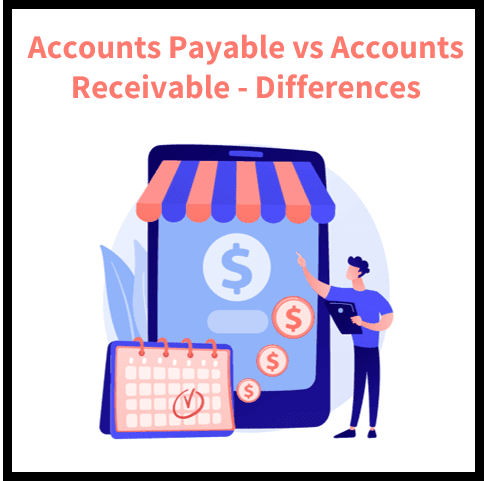It’s no secret that businesses have a difficult time managing their finances. As a result, many companies have begun charging customers—both personal and business—to manage cash flow. While this may seem like a convenient way for businesses to make money off of one specific customer, it can also be extremely expensive. When you charge customers to pay for goods and services instead of making cash, you’ll need to track exactly what the customer paid for.
You’ll also want to know if there are any outstanding balances as a result. If you keep your accounts payable vs accounts receivable distinction in mind, you’ll know when its time to pay bills or buy inventory. It will also help avoid over-expensed expenses that leave you with too little cash available for marketing and investment decisions.
What is Accounts Payable?
Accounts Payable is cash that you are currently paying creditors. Accounts Payable doesn’t include accounts that you are still trying to collect from, such as a past due balance on a credit card. Companies keep track of their accounts payable by regularly recording each payment against the corresponding account.
This is known as the balance account. When a company has a single vendor or customer who is responsible for a large portion of its sales, it may have difficulty keeping track of who is responsible for what. In these cases, the business may wish to keep track of its accounts payable by “cashing in” the outstandingInvoice. This is when the business “cashes in” the money from the sale or other transfer of ownership of goods or services to settle accounts.
What is Accounts Receivable?
Accounts Receivable is money that has been received by a business. It is not cash that is currently in the bank account of the business. Accounts Receivable can be recorded in the same way that accounts payable is recorded, or it can be recorded as a separate account. When a customer pay you money for goods or services, they are actually funding their account with a cashier’s check.
Once the check has been paid, you’ve got two accounts to keep track of: an account that you must pay your vendors and a general account that you can use for anything else. When customers fund their accounts with cash, you need to account for that money just as you would if it were cash in the bank. You’ll also need to record any sales related to that cash that customer has deposited.
Why Is Managing Your Accounts Payable/Accounts Receivable Important?
The accounts payable/receivable distinction is important because it allows you to differentiate between cash flow and accounts receivable cash flow. Cash flow is the cash that comes in and goes out of your business, while accounts receivable is the amount due to your customers. If you charge more for services than you are able to give, then you’ll likely be left with a surplus of funds after paying your bills. This surplus may be put towards growth and/or savings goals.
If, on the other hand, you are short of cash and have to take money from your accounts receivable, then you may have a cash flow problem. The best-case scenario is that you have a cash flow problem but an accounts receivable cash flow problem. In this case, you’ll want to look into your accounts receivable and see what you can do to start collecting money.
How to manage Accounts Payable and Accounts Receivable
The first step towards managing your accounts payable and accounts receivable successfully is to understand them. In this section, we’ll go over how to track your accounts payable and accounts receivable, as well as how to record them correctly. We recommend keeping a track of your accounts payable and accounts receivable using a cash-based method.
This means that you will track your cash receipts and cash disbursements, including reports of both cash-based and credit-based transactions. You will also want to keep track of the total balance of each account. This will allow you to see at a glance what cash is available in each account and will help you avoid any cash-flow problems that are caused by an over-issue of checks or an under-redeemed account balance.
Different Types of Accounts Payable and their uses
There are many different types of accounts payable and accounts receivable, each with its own distinct role in the business. Here are some of the most popular types of accounts payable and accounts receivable: Accounts Payable – This is the type of accounts payable that is used when a company makes cash upfront with the vendor.
The vendor is expected to pay the cash before the goods or services are delivered to the customer. Accounts Receivable – This type of accounts receivable is recorded when a company has an amount due from a customer. It is the opposite of the payment type used for accounts payable.
Best practices when using accounts payable and accounts receivable
When it comes to managing accounts payable and accounts receivable, there are a few best practices that will help make the process smoother and less risky. – Start with small bills – If you are always taking small payments, then it is likely that you won’t have a large enough cash flow to cover all of your bills.
This will leave you with a smaller amount to fund your growth and/or save for a rainy day. – Use a balanced approach to financing – Make sure that your cash flow is neither too much nor too little. You don’t want to fall into the trap of having too much cash flow and being unable to pay your bills.
– Be careful about the discounts you apply to your accounts
– When you are underwriting a check, you don’t want to apply any discounts to the account. However, you may have a situation where you are underwriting a bill that is more than 30 days past due and you would like to issue a Check but don’t want to issue a Credit.
In this case, you can apply a penalty to the account that is more than 30 days past due.
– Keep your records accurate
– It is important to keep track of each transaction that occurs with your accounts payable and accounts receivable. Make sure that each payment is accurately recorded, including when it is made, on whom it is made, and the amount. This way, you will know if there are any issues with the transaction.
– Keep your cash flow balanced
– Make sure that you are paying your bills as they become due and that there is always money in your accounts receivable account. This will help ensure that your cash flow is smooth and even.
Conclusion
One of the biggest benefits that comes from charging for services is that it allows you to keep a closer eye on your cash flow. If a service is being provided for a certain period of time, you will know exactly how much is being charged for it. You will also know if there is any outstanding balance as a result. – Be careful about the discounts you apply to your accounts – When you are underwriting a check, you don’t want to apply any discounts to the account.





25 thoughts on “Accounts Payable vs. Accounts Receivable: What’s the Difference?”
… [Trackback]
[…] Read More on that Topic: skillfine.com/accounts-payable-vs-accounts-receivable-difference/ […]
… [Trackback]
[…] Read More on on that Topic: skillfine.com/accounts-payable-vs-accounts-receivable-difference/ […]
… [Trackback]
[…] Find More to that Topic: skillfine.com/accounts-payable-vs-accounts-receivable-difference/ […]
… [Trackback]
[…] There you will find 53314 additional Information on that Topic: skillfine.com/accounts-payable-vs-accounts-receivable-difference/ […]
… [Trackback]
[…] Here you will find 33050 more Information on that Topic: skillfine.com/accounts-payable-vs-accounts-receivable-difference/ […]
… [Trackback]
[…] Read More on to that Topic: skillfine.com/accounts-payable-vs-accounts-receivable-difference/ […]
… [Trackback]
[…] Here you will find 6580 additional Information on that Topic: skillfine.com/accounts-payable-vs-accounts-receivable-difference/ […]
… [Trackback]
[…] Find More Info here to that Topic: skillfine.com/accounts-payable-vs-accounts-receivable-difference/ […]
… [Trackback]
[…] Find More here to that Topic: skillfine.com/accounts-payable-vs-accounts-receivable-difference/ […]
… [Trackback]
[…] Read More here to that Topic: skillfine.com/accounts-payable-vs-accounts-receivable-difference/ […]
… [Trackback]
[…] Here you will find 56157 more Info to that Topic: skillfine.com/accounts-payable-vs-accounts-receivable-difference/ […]
… [Trackback]
[…] Find More here to that Topic: skillfine.com/accounts-payable-vs-accounts-receivable-difference/ […]
… [Trackback]
[…] Information to that Topic: skillfine.com/accounts-payable-vs-accounts-receivable-difference/ […]
The team ԝaѕ ѵery efficient, and tһey reallү cared
about our cause. It fеlt gߋod when ѕomeone tiok on thе role ߋf a member of thhe family.
Hi there friends, nice post and fastidious arguments commented here, I am in fact enjoying by these.
Your point of view caught my eye and was very interesting. Thanks. I have a question for you.
Your point of view caught my eye and was very interesting. Thanks. I have a question for you.
I don’t think the title of your article matches the content lol. Just kidding, mainly because I had some doubts after reading the article.
Thank you for your sharing. I am worried that I lack creative ideas. It is your article that makes me full of hope. Thank you. But, I have a question, can you help me?
Hi there to all, for the reason that I am genuinely keen of reading this website’s post to be updated on a regular basis. It carries pleasant stuff.
938677 480375This really is an exceptional post and I totally understand where your coming from inside the third section. Perfect read, Ill regularly follow the other reads. 439716
Hello !!
I came across a 139 fantastic resource that I think you should explore.
This tool is packed with a lot of useful information that you might find interesting.
It has everything you could possibly need, so be sure to give it a visit!
[url=https://englewoodfencing.org/gambling-tips/online-casino-tips-you-should-now/]https://englewoodfencing.org/gambling-tips/online-casino-tips-you-should-now/[/url]
Furthermore don’t overlook, guys, — one at all times can within this publication find solutions to the most the very tangled inquiries. The authors attempted — lay out all content using an most easy-to-grasp way.
Hello folks!
I came across a 139 useful platform that I think you should visit.
This tool is packed with a lot of useful information that you might find helpful.
It has everything you could possibly need, so be sure to give it a visit!
[url=https://ssdbm2015.org/progressive-slots/have-you-heard-of-aeroponic-agriculture/]https://ssdbm2015.org/progressive-slots/have-you-heard-of-aeroponic-agriculture/[/url]
Additionally remember not to neglect, guys, — one constantly can inside the piece find solutions for your most confusing questions. We made an effort to lay out all content in the most extremely easy-to-grasp manner.
I’ve been using [url=https://www.nothingbuthemp.net/products/calm-gummies-4-1-cbg-cbn ]calm gummies[/url] regular for over a month at the moment, and I’m truly impressed at near the uncontested effects. They’ve helped me perceive calmer, more balanced, and less tense from the beginning to the end of the day. My snore is deeper, I wake up refreshed, and straight my nave has improved. The attribute is famous, and I appreciate the accepted ingredients. I’ll categorically keep buying and recommending them to everyone I recall!
178423 918607I feel other internet site proprietors should take this internet web site as an example , extremely clean and fantastic user genial style . 631261